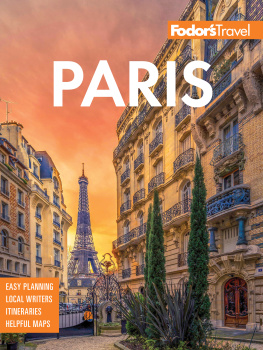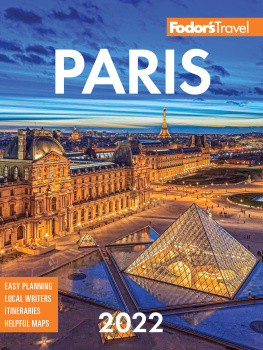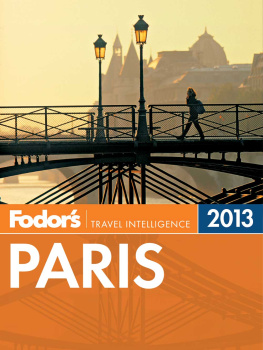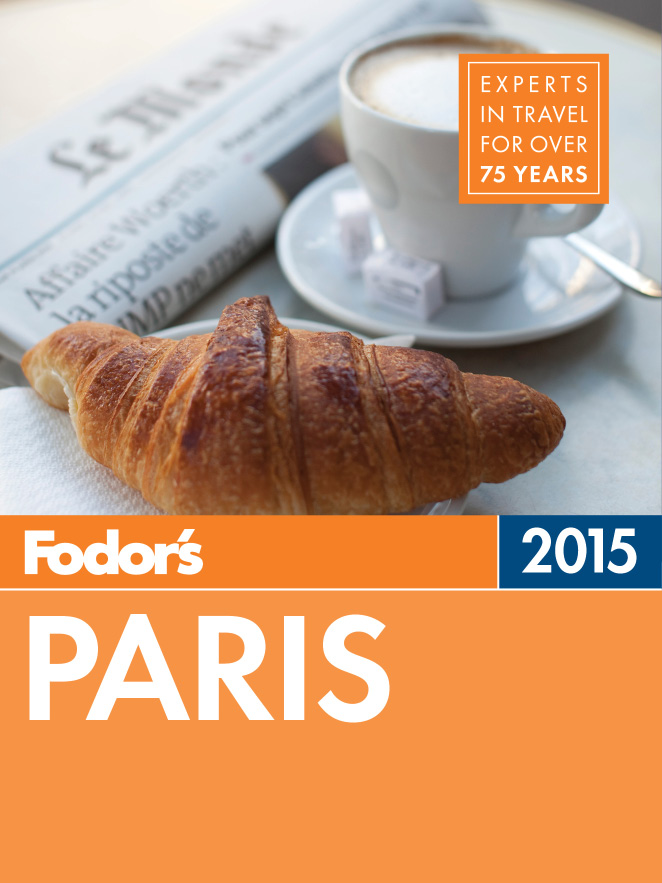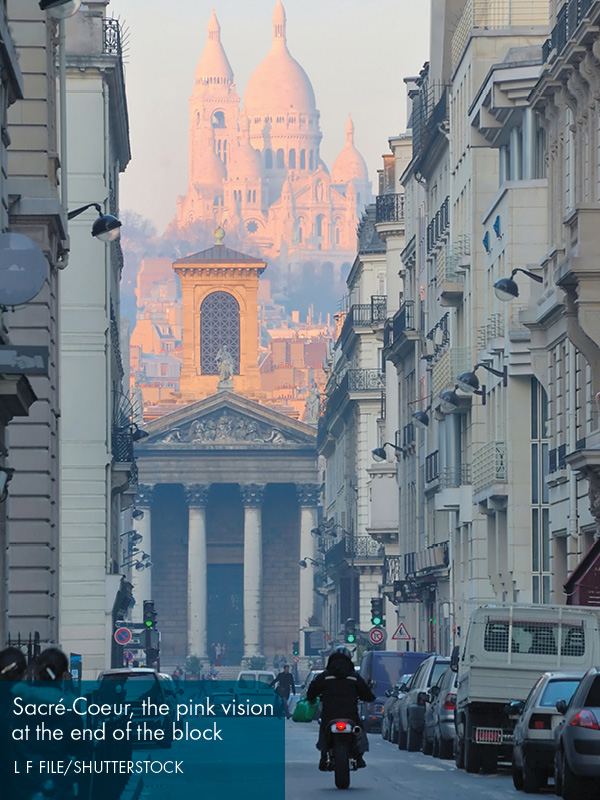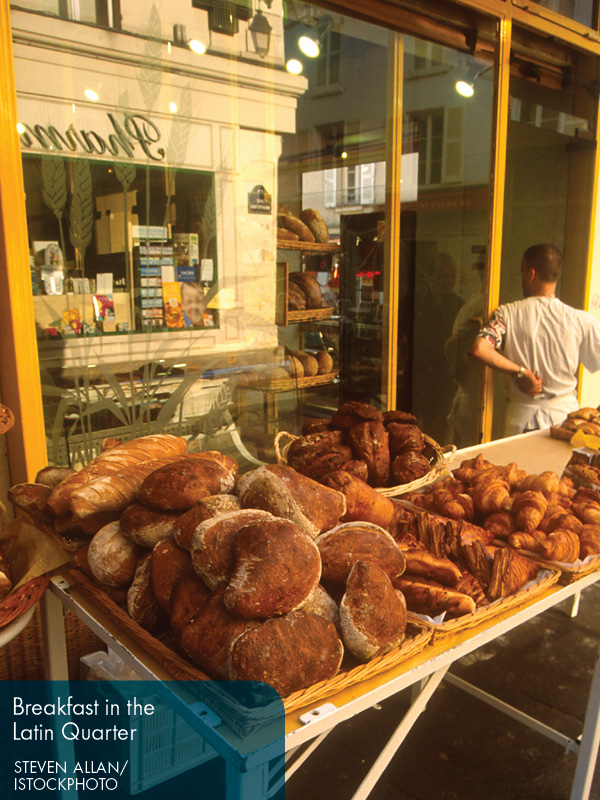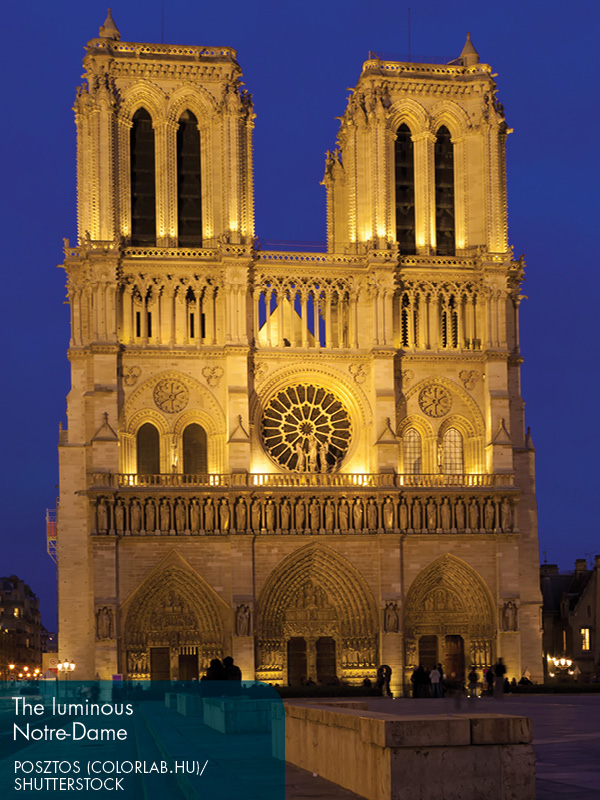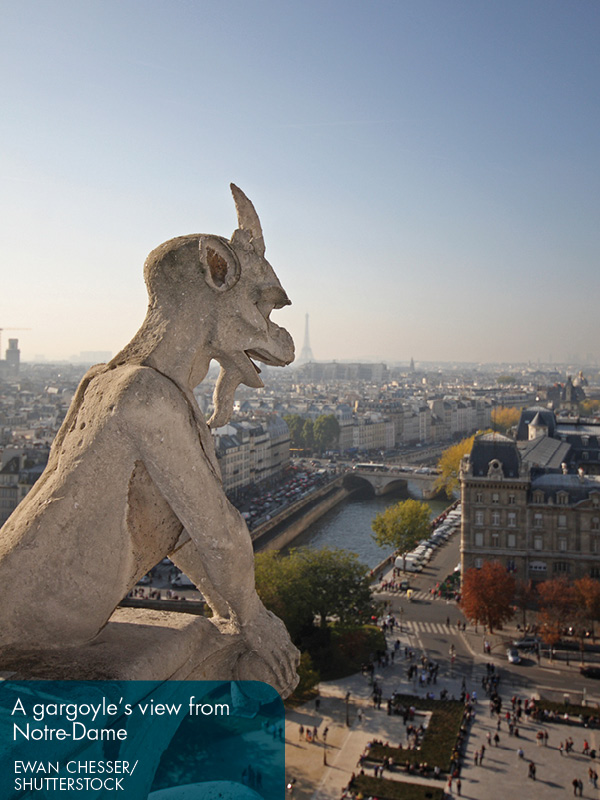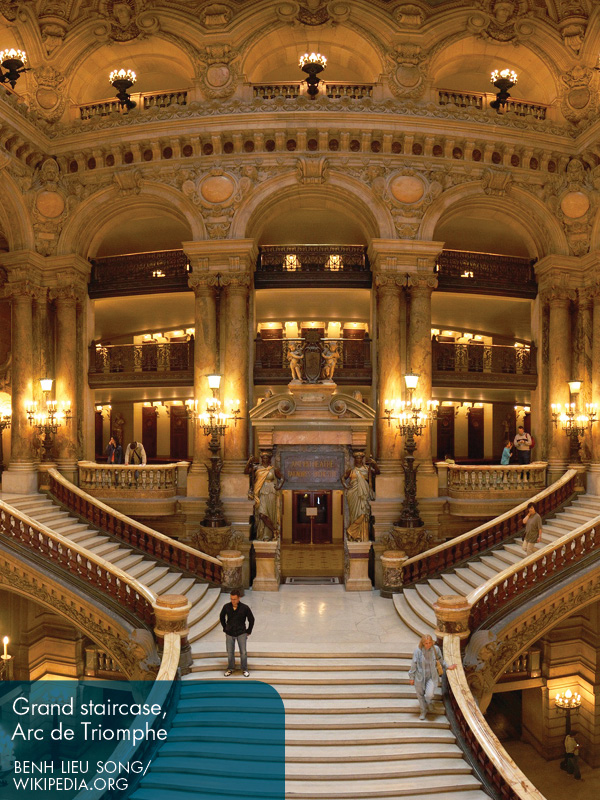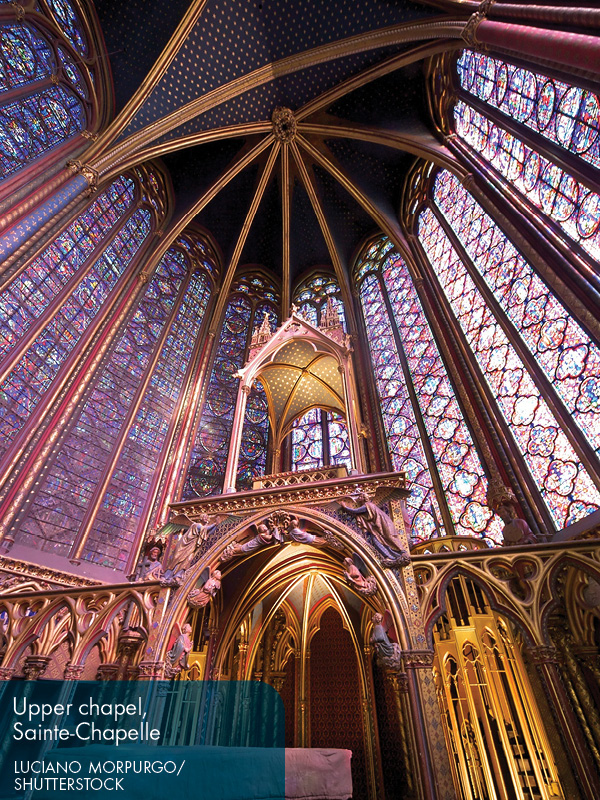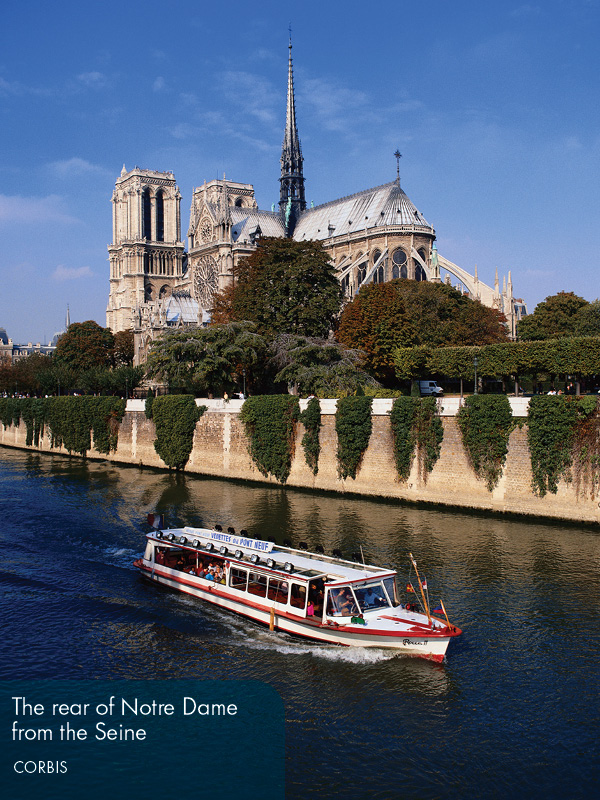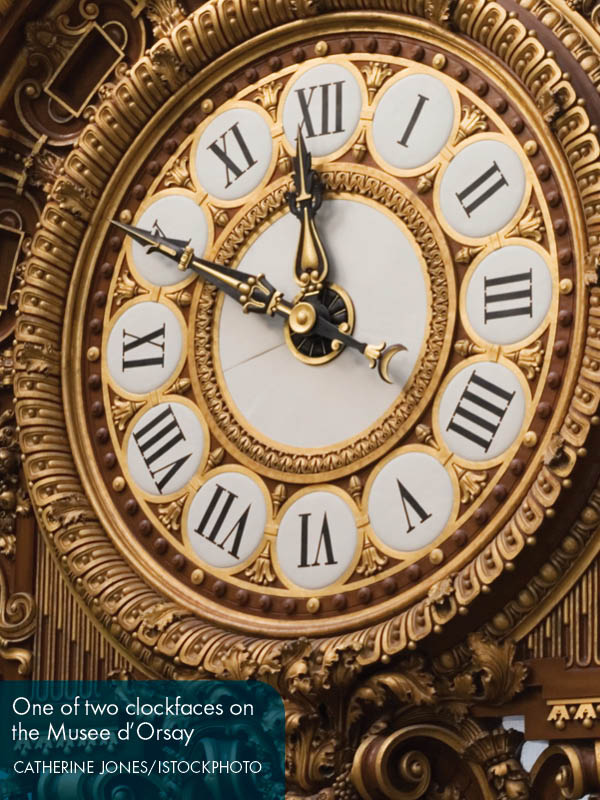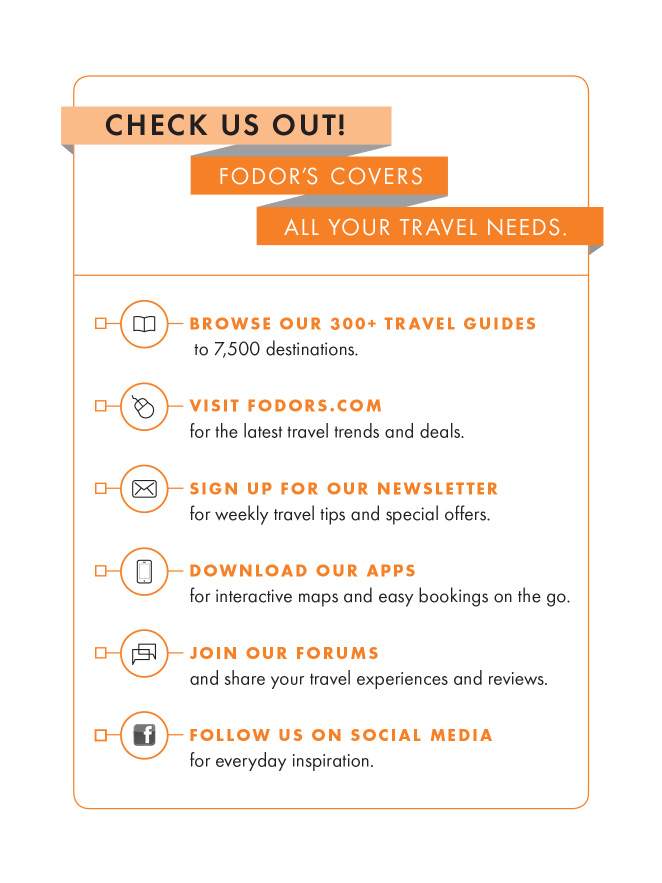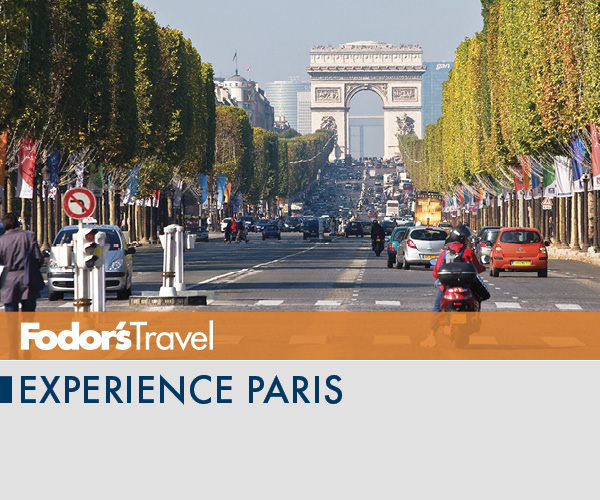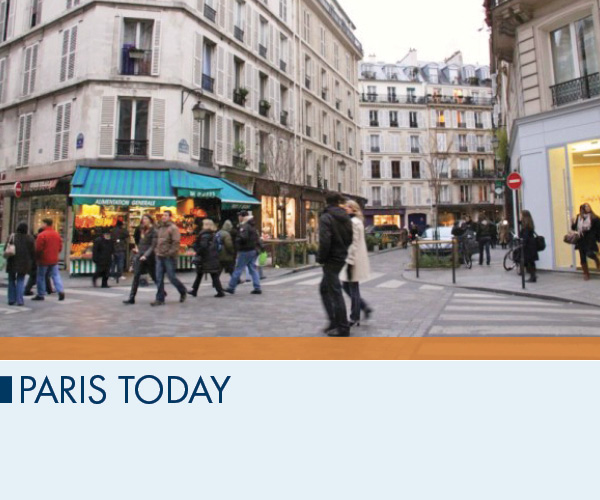Bienvenue Paris ! Or, welcome to Paris! Although it may seem as if time stands still in this citywith its romantic buildings and elegant parks and squarestheres an undercurrent of small but significant changes happening here that might not be immediately obvious.
Todays Paris...
... is greener. Parisians are breathing a little easier today as the city moves toward a more eco-friendly lifestyle. Emission-free buses and the citys first completely electric riverboat made the capital a little more eco-friendly in 2013. And although the image of intellectuals sitting in a caf, cigarette in hand, has largely disappeared since a smoking ban was instituted in 2008, the city is now encouraging locals to trash their butts in 10,000 specially designed trash cans. The city is also cutting down on smog with its popular Vlib municipal bikes and AutoLib car-sharing service. In addition to the gradual replacement of paved streets with more aesthetically pleasing cobblestones and widening the tree-lined sidewalks, the city is slowly implementing an ambitious project to permanently pedestrianize the expressways along the Seine, following the success of Paris Plage, the yearly beach party along the river. Even rooftops are going green with gardens and solar panels popping up in several arrondissements.
... is healthier. Paris is a gastronomic capital, so youll always be able to find macarons and foie gras (despite a poll confirming that 29% of the population forgo the latter delicacy for ethical reasons). But Parisians are opening up to more diverse dining options and healthier lifestyles. Gluten-free visitors can indulge in a traditional French pastry at Helmut Newcake, Frances first gluten-free bakery. Lactose intolerant gelato lovers can swoon at the dairy-free options at Amorino. Parisians are also moving their bodies. Ever-expanding gym facilities and yoga studios are also making exercising more culturally acceptable than ever beforenot that the French had a huge weight problem to begin with.
... is friendlier. In an attempt to woo more travelers, the Paris Chamber of Commerce and Industry and the Regional Tourism Committee jointly issued a pamphlet called Do You Speak Touriste? in 2013. The publication highlights how to treat 11 different visiting nationalities. What do they say about American tourists? They expect speedy service and a proficiency in English, for starters. They also demand Wi-Fi and prefer to have dinner at 6 pm.
is tech-savvy. New gadgets and gizmos are popping up everywhere since an ongoing government program began encouraging innovation. The result? Centers like the Gat Lyrique mix technology with art on a daily basis. Google opened the Google Cultural Institute in late 2013 (an event shunned by the countrys cultural minister), which includes a permanent exhibit at the Pavillon de lArsenal. Versailles enlists the latest technology to engage visitors, and the Louvre uses Nintendo 3DS systems as their audioguides. Even bakeries are giving a nod to the future by letting you pay directly at an automated machine.
... is swankier. Did somebody say theres a recession? If so, the hospitality industry has been too busy building new luxury palace hotels in Paris to have heard the news. The glamorous Ritz Hotel in Place Vendme is scheduled to reopen by early 2015 after undergoing a 140 million facelift. Thats pennies compared to The Peninsula Paris, whose renovation of a century-old building near the Arc de Triomphe cost a whopping 338 million.
... is artistic. In 2014, the city was abuzz about the hugely anticipated reopening of the Muse Picasso. After extensive renovation work, including bulletproof windows at 12,000 a pop, the museum will occupy the entire Htel Sal, vastly increasing its original size. Le BAL LAB in Montmartre is a new independent center for documentary images, and the historic Gat Lyrique reopened as a digital arts center in 2011.
... is open on Sunday. Since the fall of 2013, Yes Weekend demonstrations by Parisian workers have encouraged the government to further relax laws banning stores from opening on Sunday. Change has come gradually, with shops in tourist areas already exempt. The Marais, the Avenue des Champs-lyses, and St-Germain-des-Prs are among the liveliest places to go on weekends, but other neighborhoods arent the ghost towns they once were. As recently as five years ago, Paris was still largely deserted in August when the locals fled to the countryside and beaches, leaving a wake of closed shops and restaurants. Today the city is very much alive throughout the summer, with outdoor music festivals, the beach along the Seine that is Paris Plage.
Whats Hot
Place de la Rpublique kicked cars to the curb with a 35 million overhaul in 2014. While the bronze statue of Marianne still dominates the square, its now a kid-friendly zone (complete with a wading pool) and a serene place to sneak a peek at the locals lounging beneath the 150 newly planted trees.
By the end of 2014, Guy Savoy will have relocated his award-winning Monnaie de Paris to an 18th-century palace at Quai de Conti. Savoy will launch a second restaurant, Metal Caf, an outdoor brasserie where five pedestrian streets will create a shortcut between the Louvre and Odon.
Costing a cool 30 million, Les Berges, a waterfront walk along the Left Bank between the Eiffel Tower and the Louvre, is open for businessif your business is sipping ros at Faust Terrace, playing backgammon at the Centipede, or working off that baguette gut at nine fitness stations. Hang out with real Parisians at the scattering of cafs and restaurants, or grab a seat at the amphitheater near the Muse dOrsay.


